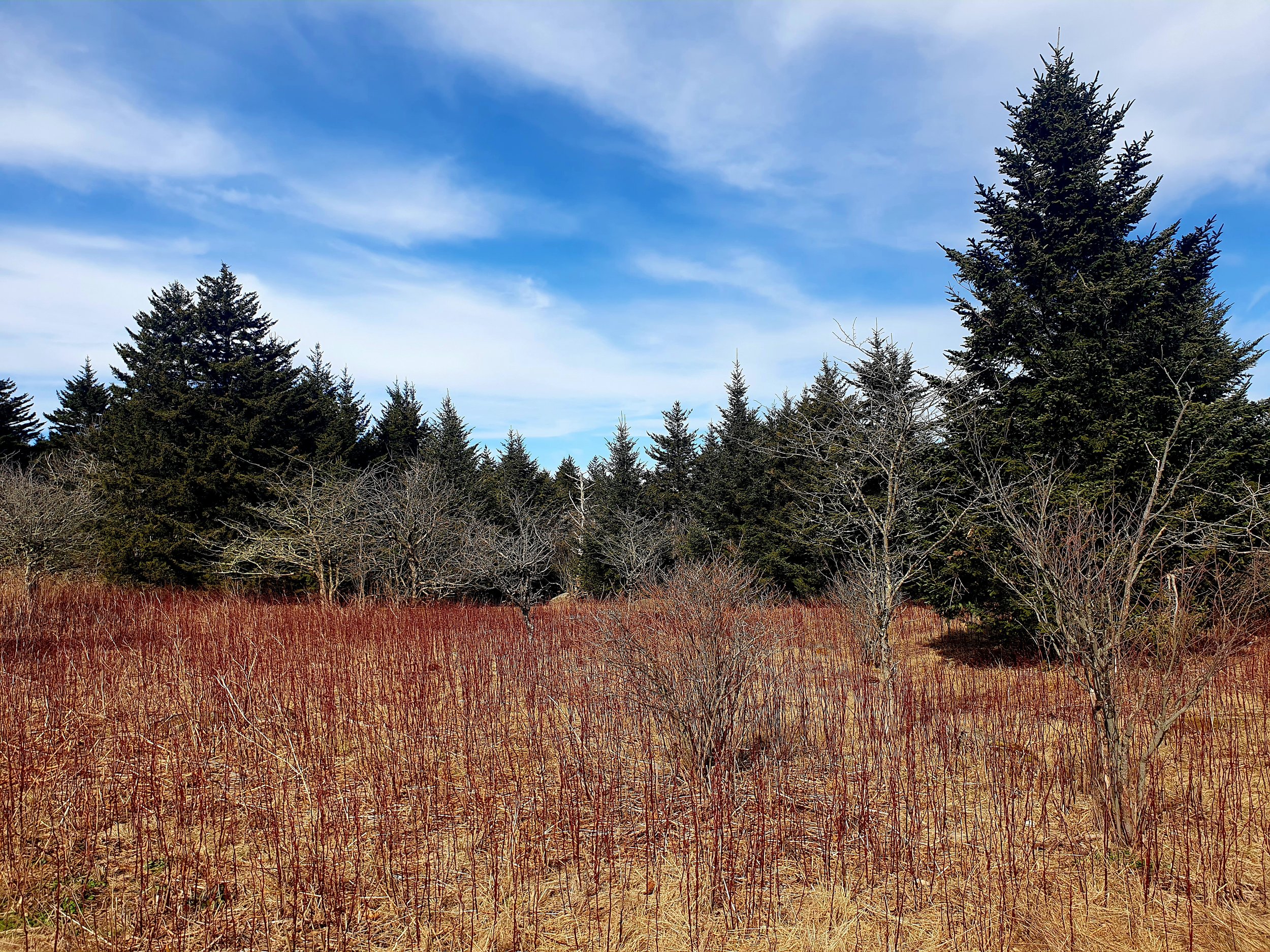
Conservation at Roan Highlands

The Roan Highlands host globally rare and unique ecosystems that are only found in select high-elevation areas in the southern Appalachians. Continue reading to learn more about what the involved organizations are doing to protect this one-of-a-kind site and the species that depend on it.
Video explaining aspects of Roan Highlands land protection and management by Southern Appalachian Highlands Conservancy.
The Roan Highlands are conserved with the work of many different organizations including the Southern Appalachian Highlands Conservancy, Appalachian Trail Conservancy, Tennessee Eastman Hiking and Canoeing Club, U.S. Forest Service, and U.S. Fish and Wildlife Service. Volunteers also play a critical role in protecting this area by helping to manage grassy balds habitat, plant seedlings, remove invasive species, maintain trails, and more.
Peakfinder installation at Round Bald: this peakfinder was placed at Round Bald in order to provide day hikers with a designated stopping point atop the bald. This helps discourage off-trail hiking and the trampling of sensitive vegetation. It also provides visitors with the opportunity to identify all the nearby mountain peaks that are visible from the top of Round Bald.
Roan Highlands Visitor Use Management (VUM) Committee
The Roan Highlands VUM Committee was formed in the Spring of 2022 in order to bring together key management partners and stakeholders to collaborate and develop both a short-term and long-term plan to address visitor use management issues and protect the ecological integrity of Roan Highlands. The committee is composed of representatives from the Appalachian Trail Conservancy (ATC), Southern Appalachian Highlands Conservancy (SAHC), Tennessee Eastman Hiking and Canoeing Club (TEHCC), Friends of Roan Mountain, Roan Mountain State Park, Roan Mountain Citizens Club, community representatives from both TN and NC, and the Pisgah and Cherokee National Forests of the United States Forest Service (USFS).
Roan Stewardship Committee
The Roan Stewardship Committee - led by SAHC - also works collaboratively to protect and manage the Roan Highlands. This committee involves diverse agencies, organizations, clubs, landowners, and more.
Pictured: a group of VUM committee members pose for a photo during an October 2022 field visit
The VUM Committee’s vision for the future of the Roan Highlands is to “safeguard the biodiversity and exemplary wildlife and plant communities of this outstanding natural heritage area through thoughtful restoration, maintenance, and management.” Partnerships, scientific research, and management actions focus on increasing the resiliency of the area to climate change, addressing recreational impacts, minimizing invasive species, and addressing other threats.
The committee views the Roan Highlands as a premier destination for high quality, low impact recreational opportunities and aims to preserve the area’s ecological integrity both now and in perpetuity. Some notable examples of conservation work undertaken at the Roan Highlands so far include:
Habitat surveys
Campsite surveys
Continued work with the USFWS on species recovery of listed threatened and endangered species
Protection through a landscape-level conservation initiative
Mowing, cutting, and other management initiatives from volunteers and multiple organizations
Boot brush installation to help control invasive species
Peakfinder installation at Round Bald
Funding from the National Park Service for habitat management
Seasonal Roan Naturalist each summer to help educate visitors and assist with management
Red spruce restoration efforts
Monitoring Gray’s lilies for lily leaf spot disease
New signs to help educate visitors and protect species
Conservation with Caleb and SAHC: watch to learn more about biodiversity and threats from recreational overuse in the Roan Highlands
Click here to learn more about stewardship of the globally significant and fragile ecosystems of the Roan Highlands.
How can I help?



